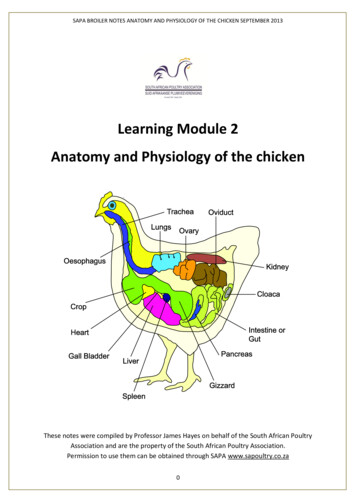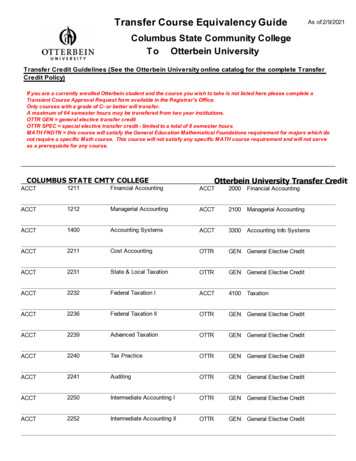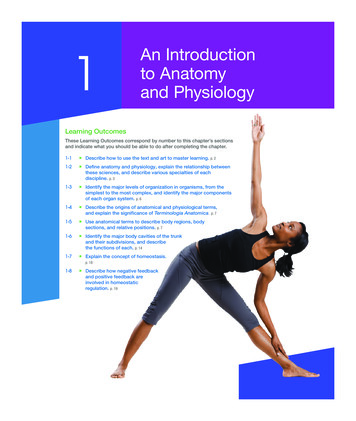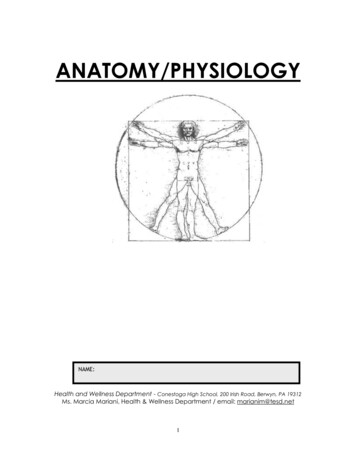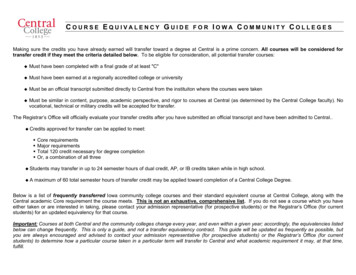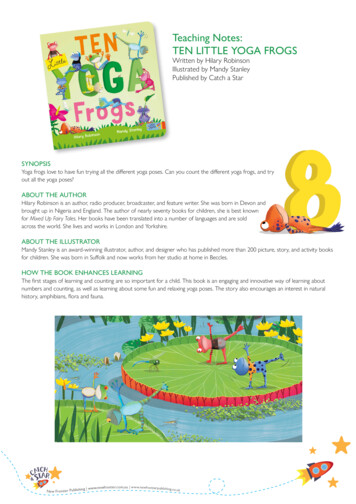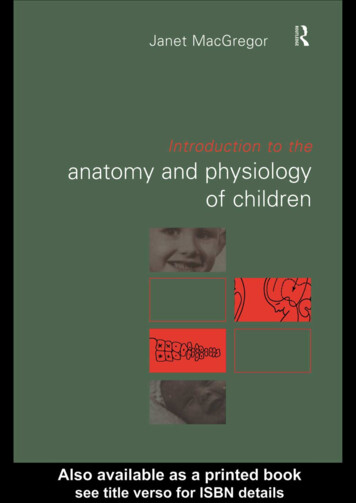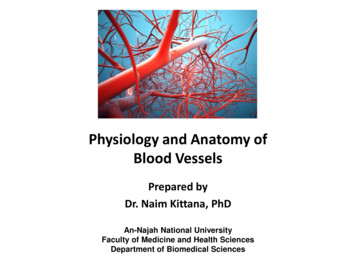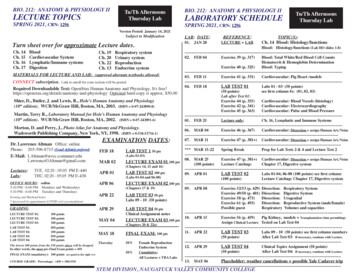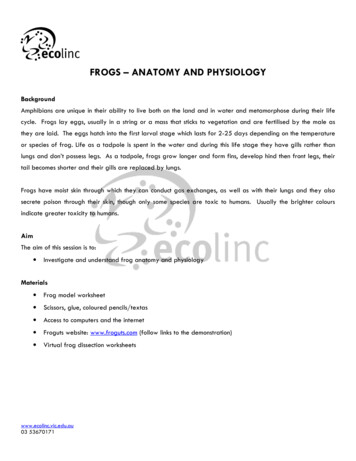
Transcription
FROGS – ANATOMY AND PHYSIOLOGYBackgroundAmphibians are unique in their ability to live both on the land and in water and metamorphose during their lifecycle. Frogs lay eggs, usually in a string or a mass that sticks to vegetation and are fertilised by the male asthey are laid. The eggs hatch into the first larval stage which lasts for 2-25 days depending on the temperatureor species of frog. Life as a tadpole is spent in the water and during this life stage they have gills rather thanlungs and don’t possess legs. As a tadpole, frogs grow longer and form fins, develop hind then front legs, theirtail becomes shorter and their gills are replaced by lungs.Frogs have moist skin through which they can conduct gas exchanges, as well as with their lungs and they alsosecrete poison through their skin, though only some species are toxic to humans. Usually the brighter coloursindicate greater toxicity to humans.AimThe aim of this session is to: Investigate and understand frog anatomy and physiologyMaterials Frog model worksheet Scissors, glue, coloured pencils/textas Access to computers and the internet Froguts website: www.froguts.com (follow links to the demonstration) Virtual frog dissection worksheetswww.ecolinc.vic.edu.au03 53670171
Notes for teachers This virtual dissection can be completed in conjunction with or instead of a real dissection, but may assistin overcoming some ethical issues faced by students. The dissection worksheet is specifically focused on a cane toad which is a feral species in Australia andone which is causing considerable destruction, particularly in the northern parts of Australia, so is asuitable species to be used for a dissection. Froguts is a subscription service, but there is a free demo of a basic frog dissection available. To exploreother aspects of the frog, you may need to subscribe. This lesson could be extended to examine amphibian reproduction and evolution.Estimated Duration Introduction: 10 mins Frog model: 20-30 mins Froguts dissection: 15-20 minsLesson Introduce topic using Power Point presentation and revise previous Frogs lessons. Colour, cut out and assemble the Frog Model. Load Froguts website, follow the link to the demonstration and begin external examination and recordingof information on first dissection worksheet. Complete the virtual dissection, recording information on the second dissection worksheet.www.ecolinc.vic.edu.au03 53670171
www.ecolinc.vic.edu.au03 53670171
www.ecolinc.vic.edu.au03 53670171
www.ecolinc.vic.edu.au03 53670171
mmon name: On your frog diagram,label the major externalbody parts (parts of theface, abdomen, thorax,limbs and digits).Mark with a circle thelocation the pins should goto secure the animalduring a dissection.Using a symbol, suggestwhich tool would makeincisions, and draw adotted line along the linesof incision.From the PowerPointpresentation, complete thenaming system of the canetoad.www.ecolinc.vic.edu.au03 53670171
On your frog diagram, label themajor internal organs identified inyour online dissection, and brieflystate the role of each organ.www.ecolinc.vic.edu.au03 53670171
Investigate and understand frog anatomy and physiology Materials Frog model worksheet Scissors, glue, coloured pencils/textas Access to computers and the internet Froguts website: www.froguts.com (follow links to the demonstration) Virtual frog dissection worksheets


